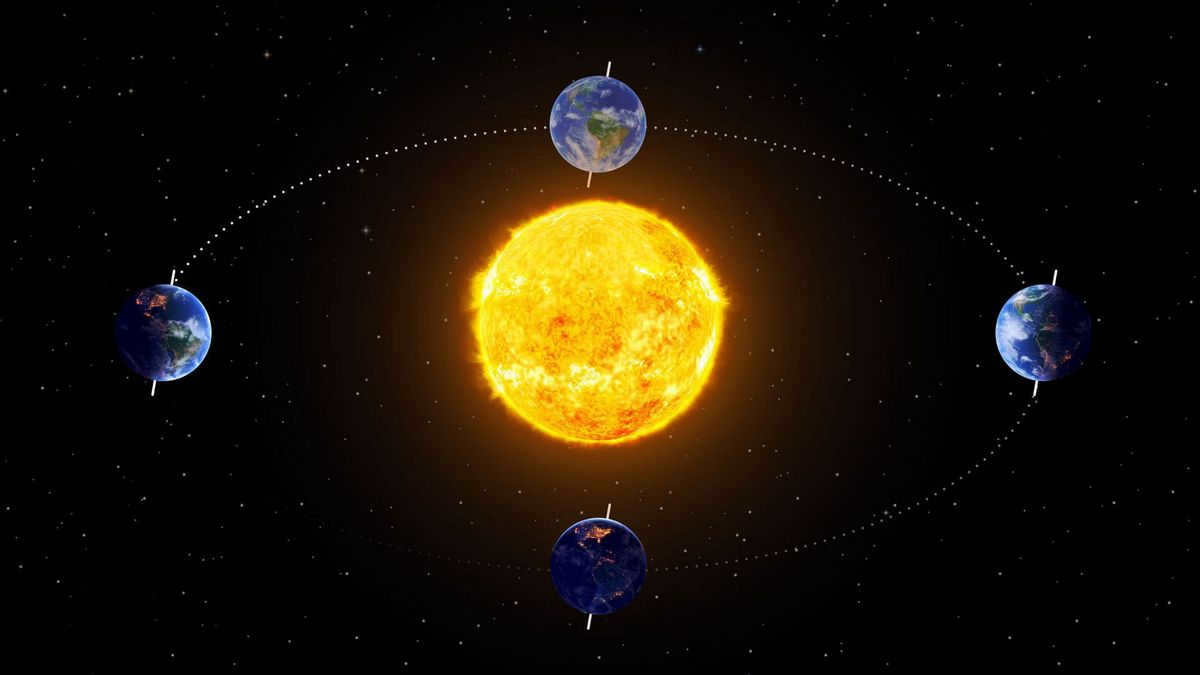
If you’ve ever been curious about the phenomenon of changing seasons on our planet, then this article is for you. Here, we will explore the various approaches to defining seasons and delve into the reasons behind their continuous cycle.
What is the cause of the changing seasons?
There is a common misconception that the changing seasons are a result of the elliptical shape of the Earth’s orbit. It is believed that when the Earth is closer to the Sun, it becomes warmer, and when it is farther away, it becomes colder. However, this is not entirely accurate as the Earth’s orbit is nearly circular and does not have a significant impact on weather and temperature patterns.
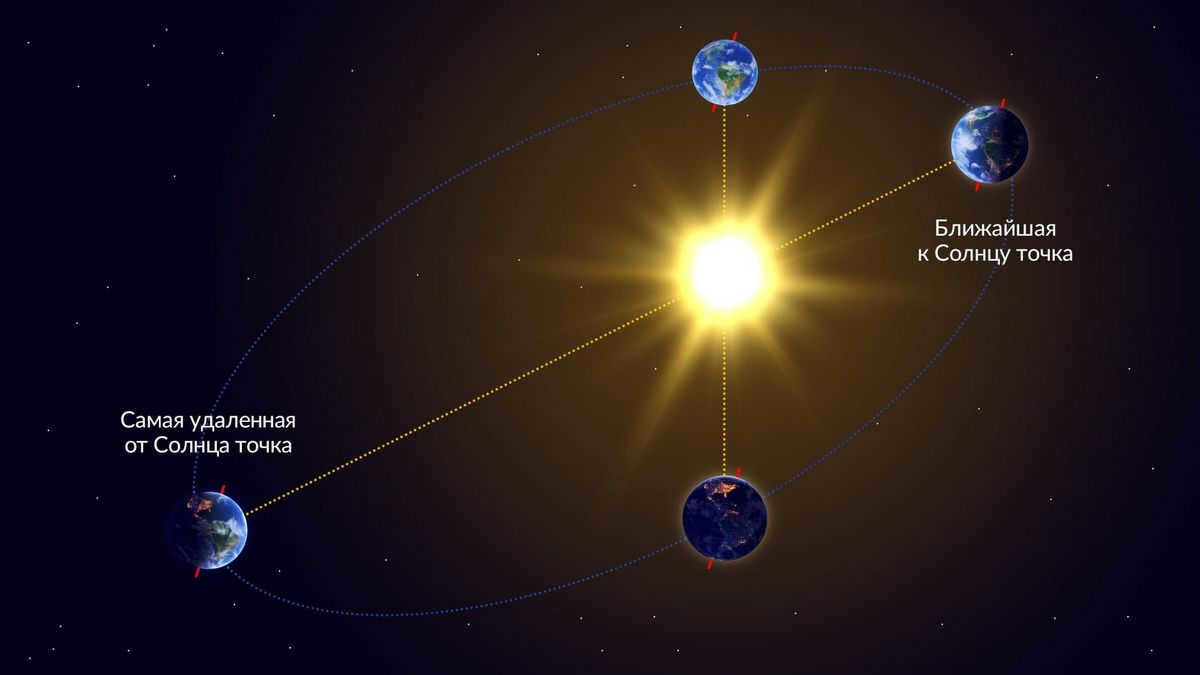

The primary cause for the alteration of seasons lies in the inclination of the Earth’s axis. The Earth’s rotation axis is tilted at an approximate angle of 23.5 degrees with respect to the orbital plane. It is believed that the tilt of the rotation axis occurred following a collision between the Earth and another planet roughly the size of Mars.
Although the tilt of the rotation axis remains constant, the Earth’s orientation in relation to the Sun is continuously changing as it revolves around the Sun. When one hemisphere of the Earth faces the Sun, it experiences spring and summer, while the other hemisphere receives less sunlight during that time, resulting in fall and winter.
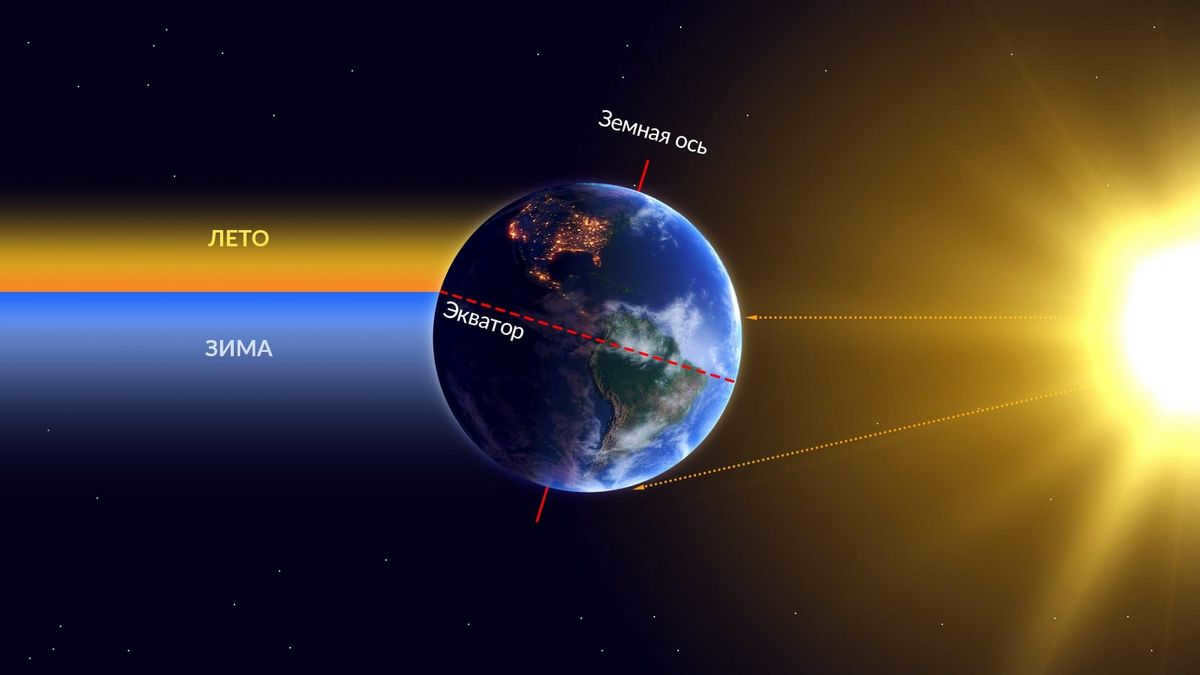
What is the number of seasons in a year?
A season, also known as a season, is a specific period of time during the year that is characterized by certain weather patterns, average daily temperatures, and the length of daylight hours. The number of seasons experienced in a year can vary depending on the geographical location and cultural traditions of a particular region. In temperate and circumpolar areas, it is common to recognize the existence of four distinct seasons: spring, summer, autumn, and winter.
However, in some South Asian countries, the year is divided into six seasons instead of four. For instance, the Indian calendar acknowledges the following seasons: spring, summer, monsoon, autumn, early winter, and late winter. In many tropical regions, there are just two seasons: the wet season and the dry season.
What is the timing of the seasons?
There are two primary methods for determining when the seasons occur: meteorological and astronomical.
In the meteorological approach, each season spans three months and commences on the first day of the respective month: March 1st, June 1st, September 1st, and December 1st.
In the astronomical approach, each season starts on either the solstice (when the Sun reaches its northernmost or southernmost point in the sky) or the equinox (when the Sun crosses the celestial equator).
By the way, are you familiar with the distinctions between solstices and equinoxes? Take our quiz to find out!
We are accustomed to the recurring changes of nature on Earth. Many individuals are curious about which planets in the solar system also experience seasonal variations.

The process behind the changing of seasons
The primary factor contributing to the variation in climatic seasons on any celestial body is the angle at which its axis is tilted in relation to the plane in which it orbits around the Sun.
As a result, different regions of the celestial object receive varying amounts of light and heat at each point along its trajectory.
On Earth, the axis is tilted at an angle of 23.44° relative to this plane, known as the ecliptic, which results in the familiar seasonal patterns:
- When the planet tilts its north pole towards the center of our solar system, polar day commences in the northern hemisphere, and summer begins here as the maximum sunlight bathes the region. Conversely, during this period, the opposite pole is oriented away from the Sun, resulting in polar night and winter in the corresponding hemisphere.
- After six months, when the south pole faces the Sun, the situation is reversed.

Seasonal Changes on Planets in the Solar System
Not all planetary bodies in the solar system experience seasonal changes. On those planets where the angle between the orbit and the axis of rotation is 0, day and night are of equal duration. The sun, being the main celestial body in our system, rises to the same point on the horizon every day, resulting in a consistent year-round period.
It is important to distinguish between the annual seasons and the weather seasons. The latter can vary even if a planet experiences eternal summer or winter from an astronomical perspective.
Mercury
Mercury does not have a tilt of its rotation axis, but it does experience seasonal weather changes. Scientists have proven that this is due to the planet’s elongated orbit.
Mercury alternates between approaching the Sun at a distance of 45 million kilometers and moving away from it at a distance of 70 million kilometers.
When Mercury is closer to the Sun, it experiences summer with daytime temperatures reaching an average of +300°C (the highest recorded temperature is +427°C). As the planet moves to the far side of its orbit, winter sets in. During the day, the surface only warms up to +107°C, and on the dark side, it reaches -193°C.
On Mercury’s poles, it is consistently chilly along every point of its orbital path because of the limited tilt of its axis, which means that sunlight barely reaches these areas. These regions are known for their darkness and coldness, and researchers have additionally observed the presence of polar ice caps at Mercury’s poles.
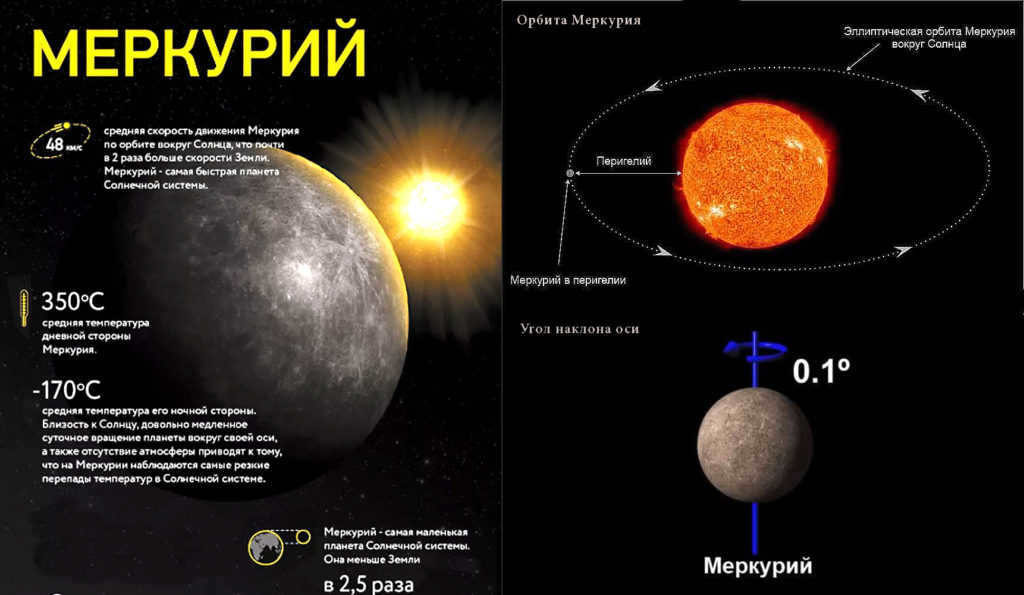
Mercury, the closest planet to the Sun, is known for its extreme temperature variations. The side of the planet that faces the Sun experiences scorching heat, while the opposite side is subjected to freezing temperatures. In addition, due to its elongated orbit, Mercury undergoes seasonal changes, transitioning from summer to winter. This phenomenon has been captured in stunning images by v-kosmose.com/ Roscosmos.
Venus
Unlike Mercury, which has a nearly zero angle of inclination of its rotational axis, Venus has a much larger angle: 177 out of 180 degrees possible. In other words, the actual angle is only 3 degrees, but the planet appears to be “upside down”.
Interestingly, the local weather on Venus remains constant. The planet experiences a perpetual summer with average temperatures surpassing +400 degrees Celsius throughout the year.
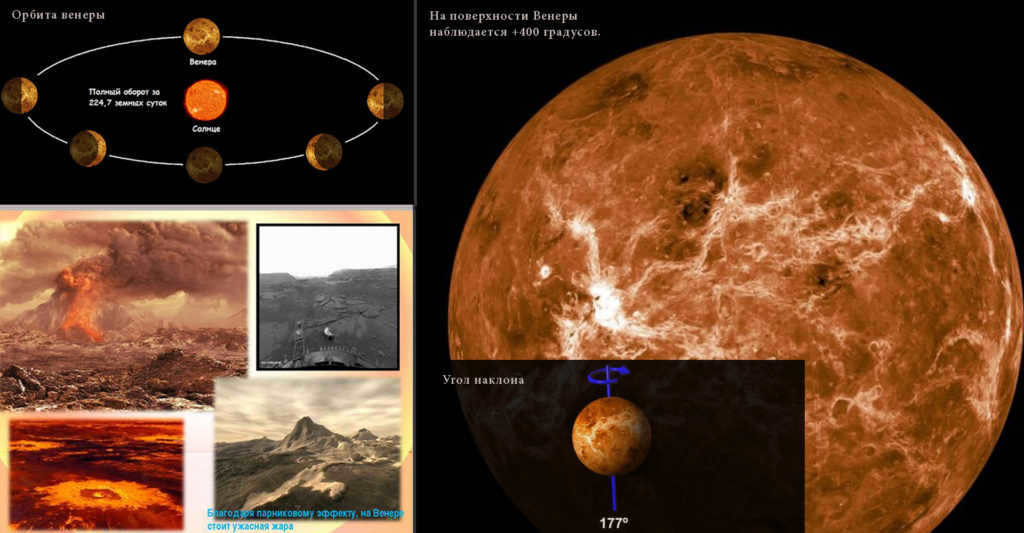
The atmosphere of Venus is composed of extremely dense clouds, resulting in the creation of a “greenhouse effect” on the planet. This phenomenon leads to Venus experiencing a perpetual summer. Credit: astroinformer.com/photo of the surface by the Venus 13 spacecraft.
Mars
Mars shares similarities with Earth in terms of its position in space. Its tilt is slightly greater than ours, by less than 2 degrees, which has led to the local climate having a slightly more pronounced seasonality.
One can particularly observe the difference in temperature, especially in the southern hemisphere of the Red Planet, where winters are icy and summers are scorching. In the opposite hemisphere, however, this contrast is less pronounced, with calmer summers and winters.

Scientists have made a discovery that seasons occur on Mars, just like on planet Earth. These changes happen due to the tilt of the planet’s axis in relation to its orbit. The northern hemisphere experiences about 40% more solar radiation, resulting in shorter winters and longer, cooler summers. On the other hand, the southern hemisphere has shorter summers and long, cold winters. This fascinating insight into Mars’ climate was made possible by the Viking 2 spacecraft, which captured amazing images of the planet’s surface. Credit: cosmosplanet.ru/surface photo from the Viking 2 spacecraft.
Jupiter
The angle of the axis of rotation of Jupiter in relation to the ecliptic is just over 3 degrees. The weather on the planet does not experience seasons and remains constant throughout the year.
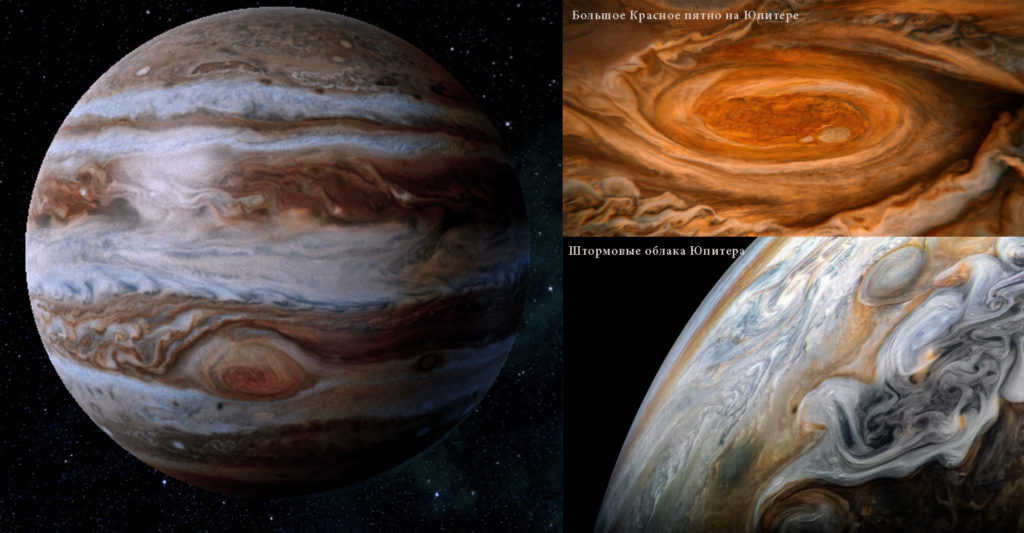
There are no seasons on this gas giant. However, this planet can boast of having an abundance of storms. Credit: cosmosplanet.ru/ NASA.
Saturn
This planet has a 29-degree angle between its axis of rotation and its direction of motion around the Sun, resulting in noticeable variations in the amount of heat and light.
Each season on Saturn lasts for 6-7 years and causes the celestial body to undergo slight changes in its coloring.
Saturn is typically yellow in color, but during its winter seasons, certain areas of the planet take on a blue hue.
Scientists attribute this phenomenon to the changing intensity of UV radiation, which is weaker during the winter and increases with the onset of warmth.

Bluish areas are clearly visible on the image, indicating the locations on the planet where winter currently prevails. Credit: NASA.
Uranus
Uranus has a rotational axis that is tilted nearly 98° relative to the ecliptic plane, causing the planet to “lie upside down on its side”. This unique tilt results in peculiar changes of seasons.
During the solstice, only one of Uranus’ polar regions faces the center of the solar system.
On Uranus, there is no typical change in the length of day throughout the celestial body. Currently, sunrise and sunset can only be observed at the equator. In the rest of Uranus’ world, there are polar days and nights that each last 42 years.

On the planet Uranus, the occurrence of seasons is unique. Due to the peculiar tilt of its axis, instead of traditional seasonal changes, there are periods of “polar day” and “polar night”. This phenomenon can be observed on Uranus, making it a fascinating celestial body. Credit: vesna-info.ru/ria.ru.
Neptune
The tilt of Neptune’s rotational axis is 30°, and if it were closer to the center of the solar system, its seasons would resemble those of Earth.
However, due to its significant distance, Neptune experiences a year that is more than 160 times longer than Earth’s. Each of its seasons, including winter, spring, summer, and fall, lasts for a duration of 40 Earth years.
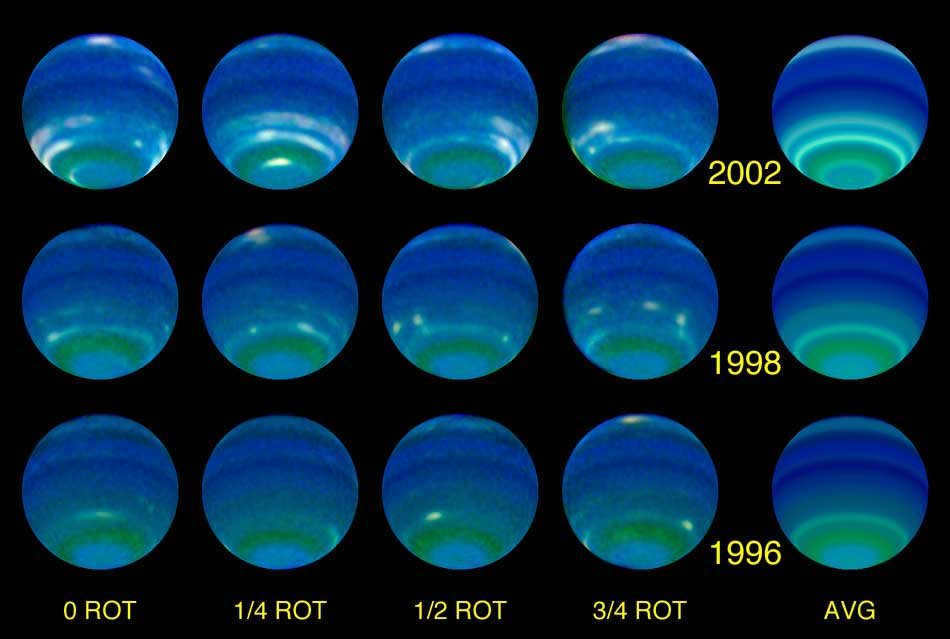
These images depict the observations made by scientists regarding the planet Neptune. The first four columns present different perspectives of its rotation, while the last column represents an average of these observations. The increasing brightness in each observation period indicates the impact of the Sun on the planet. This suggests that Neptune undergoes seasonal changes similar to Earth, albeit at a much slower pace, due to its considerable distance from the Sun. This information is credited to the scientific journal Icarus/NASA.
Currently, the southern region of Neptune is experiencing summer, and it will not transition to fall until 2045-2046.
The Earth experiences changing seasons due to its tilt angle relative to its axis. This tilt causes the hemispheres to approach the heat source at different times during the planet’s rotation around the Sun. As a result, one half of the Earth receives the majority of the heat and experiences summer, while the other half warms up three times less and enters winter.
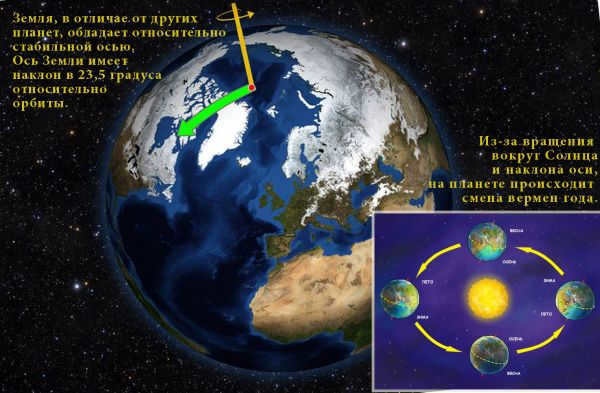
Because of the planet’s rotation axis tilt, the Northern and Southern hemispheres alternate in their proximity to the Sun. As they get closer to the Sun, the temperature rises. Credit: NASA/JPL-Caltech/ quibbll.com.
Understanding the reasons for seasonal changes
In ancient times, the changing seasons were attributed to mythology. It was not until the Renaissance that it was scientifically proven that the planet is spherical and revolves around the Sun. This refuted the religious explanations previously proposed.
As the Earth travels along its orbit, it alternately moves closer to and further away from the Sun. The distance between the two bodies ranges from 147.1 to 152.1 million kilometers. In early June, the Earth is at its farthest point from the Sun, while in early January it is closer to the star. However, it’s important to note that the Earth’s distance from the Sun doesn’t directly cause the change of seasons. This is a commonly misunderstood concept among many adults.
Winter and summer occur in alternating cycles due to the uneven warming of the planet. This is caused by the 23-degree angle of inclination of the Earth’s axis in relation to the Sun. On one hemisphere, the Sun’s rays fall at a right angle, while on the other hemisphere, they fall at an acute angle. As the Earth rotates, different areas are better illuminated based on their position relative to the Sun. This results in one hemisphere receiving the majority of the heat and experiencing summer days, while the opposite hemisphere faces winter cold.
At the equator, where direct sunlight is always received, the change of seasons is less pronounced and there is no snow or negative temperatures. However, as the climate belt moves farther away from the equator, the weather patterns undergo greater changes.
If the Earth had no tilt angle, it would experience a consistent level of warmth throughout the year, resulting in the absence of seasons. Without any tilt, the equator would have a perpetual summer, while the temperature would gradually decrease as one moves away from the equator.
The absence of orbital motion would also result in constant weather conditions. In this scenario, one hemisphere would be continuously exposed to more sunlight than the other, leading to an eternal summer. Conversely, the opposite hemisphere would consistently experience cold temperatures.
To understand the mechanism behind the changing seasons, you can refer to the diagram.
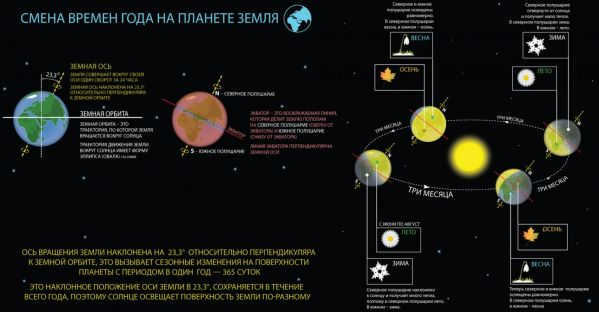
Seasons of the Calendar
The year is divided into four distinct seasons:
During winter, the length of daylight hours shortens and the temperature drops. There may be an increase in precipitation. In most parts of Russia, snowfall occurs and temperatures reach sub-zero levels. In regions with a milder climate, the cooling is not as intense, but there may be prolonged periods of rain and occasional showers.
Autumn and spring serve as transitional periods between summer and winter. The weather gradually changes during these seasons. In spring, temperatures gradually rise and in autumn, they gradually fall. Precipitation patterns also shift. Spring brings longer daylight hours, while the duration of daylight decreases in the fall.
In the summer, the duration of daylight is at its peak, accompanied by a rise in air temperature. In regions near the poles, the phenomenon of dark nights is virtually nonexistent, as the sun remains visible throughout the day and night. The occurrence of snow in the summer months is limited to areas in close proximity to the polar regions. Conversely, the southern hemisphere experiences warmer temperatures during this season due to its closer proximity to the Sun.
Each of the four seasons spans a period of three months, and once they come to an end, a transition to the next season occurs.

The amount of solar heat that reaches the Earth’s surface varies depending on the position of the Sun in the sky. When the Sun is higher above the horizon, more solar heat falls on the same area of the Earth’s surface. This is why we experience changes in seasons throughout the year. The angle of the Sun’s rays determines the amount of heat and light that reaches different parts of the Earth, leading to variations in temperature and weather patterns. Understanding these changes in solar radiation can help us predict and explain seasonal shifts.
Astronomical seasons
The astronomical seasons are defined as the days when the center of the Sun passes through the solstices or equinoxes. There are a total of four astronomical seasons, which align with the calendar seasons.
Astronomical summer begins on the summer solstice, which falls on June 21, and lasts until the autumnal equinox on September 23. This season spans a duration of 93 days, 14 hours, and 24 minutes.
Following summer is autumn, which lasts until December 22 – the date of the winter solstice. Autumn lasts for 89 days, 18 hours, and 42 minutes.
After autumn comes winter, which extends until the vernal equinox on March 21. Winter lasts for a total of 89 days and 30 minutes.
Finally, spring concludes with the summer solstice. The length of spring is equal to 92 days, 20 hours, and 12 minutes.

Equinox Periods
Equinoxes refer to the periods when the duration of daylight is roughly the same as the duration of nighttime. These occurrences take place twice a year. In the spring, equinoxes are observed on March 20-21, while in the autumn they occur on September 22-23.
Solstices, on the other hand, are the days with the longest hours of daylight and the longest nights.
Distinctive Climatic Seasons
As a result of the unique properties of liquid and soil, climatic seasons experience a delay in comparison to astronomical seasons, resulting in a lack of synchronization with the calendar seasons. The duration of these delays varies based on the specific climatic zone. The further one is from the equator, the more pronounced the contrast between summer and winter becomes.
In areas near the equator, summer and winter are characterized by abundant rainfall and prolonged showers. In spring and autumn, the level of humidity decreases and showers become less frequent. The temperature near the equator remains consistently high, with no occurrence of snow.
In tropical regions, the winter months are marked by heavy rainfall, while the summer months are hot and dry. In desert regions, rainfall is rare even during winter, and temperatures remain above 0°C throughout the year.
In the temperate region, the seasons can vary due to factors such as the proximity to the ocean and the presence of warm or cold currents. In Europe, the Gulf Stream helps to create milder conditions compared to Siberia, resulting in less extreme temperatures. Similarly, in the United States of America, the temperature tends to remain relatively moderate.
Within the temperate continental climate zone, the majority of moisture occurs during the summer months, while winters are typically dry and cold. In contrast, the oceanic climate experiences more rain and snow during the winter and fall seasons, with a decrease in precipitation during the summer and spring. The monsoon climate, found in the Far East, is characterized by heavy rainfall during the summer and a significant decrease in precipitation during the winter.
The Arctic and subarctic regions experience a unique climate pattern, with alternating periods of continuous daylight and darkness. Due to its northern location, this area is often shrouded in darkness as the sun’s rays struggle to reach its surface. The presence of permafrost is a defining characteristic of these regions, ensuring that even during the summer months, the temperature remains low and the ground remains cold. Additionally, the amount of precipitation in these areas experiences minimal seasonal fluctuations.
The phenomenon of the change of seasons is often overlooked and not fully understood. Have you ever pondered the reasons behind the regularity of this change? Why is summer characterized by longer days compared to winter? And do the seasons vary in different regions of the world? Let us delve into these inquiries and seek out the answers.
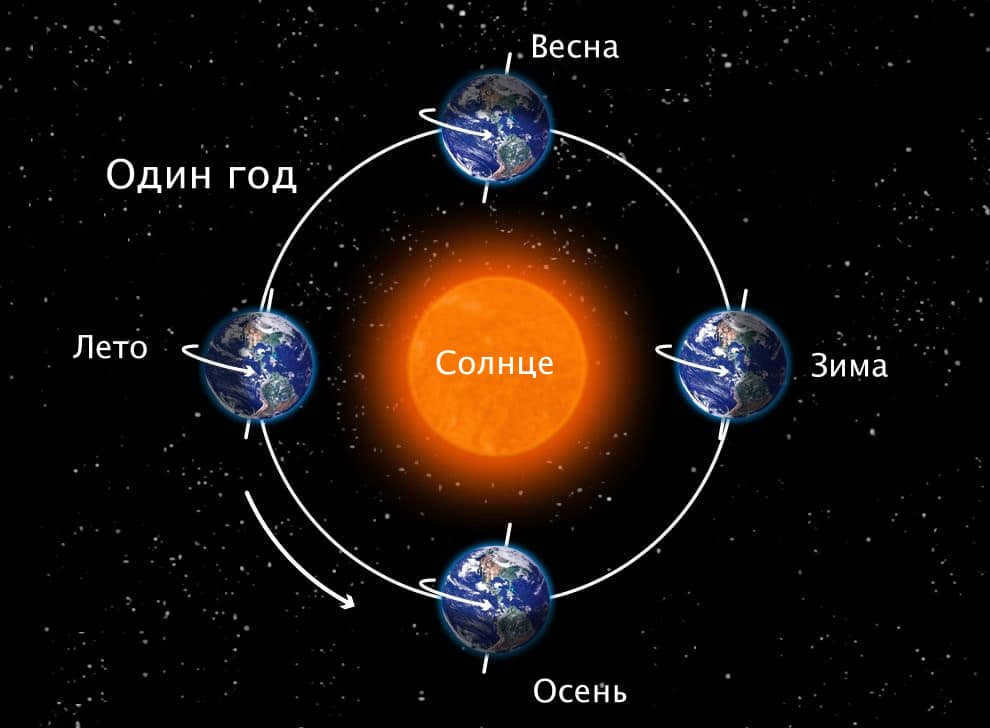
What causes the seasons to change?
The seasons change on Earth because of our planet’s significant axial tilt of 23.44 degrees. As Earth moves in its orbit, its axis of rotation remains constant. This means that different parts of the planet receive sunlight at varying angles at different times. When the sunlight hits at a steeper angle, the area warms up more, and vice versa. This is the primary reason for the changing seasons. It explains why the sun appears lower in the sky during the cold season and why the days are shorter compared to the nights.
In the northern hemisphere, winter is the time when it receives the least amount of sunlight, while summer is when it receives the most (approximately three times more). So, it all comes down to the tilt of the Earth.
Divisions of the Calendar Year
The calendar year is divided into four distinct seasons: spring, summer, fall, and winter. Each of these seasons spans a period of three months. It is important to note that not all months are of equal length. For instance, April, September, June, and November consist of 30 days each, while February has either 28 or 29 days, depending on whether it is a leap year or not. All other months contain 31 days each.
The calendar seasons officially commence on the first day of the months of December, March, June, and September.
Spring and fall occupy an intermediary position within the calendar year. During the spring season, the weather gradually becomes warmer and the days grow longer. Conversely, during the fall season, the days become shorter and the temperature gradually drops, resulting in darker days.
The calendar year begins on January 1 and concludes on December 31.
Astronomical seasons
There are four astronomical seasons, which differ from the calendar seasons. The change of seasons in astronomy starts with the equinoxes and solstices, also totaling four. The astronomical seasons are as follows:
Therefore, astronomical summer officially begins at the end of June and ends at the end of September.
The duration of one year, which is the time it takes for the Earth to complete one revolution around the Sun, is 365 days, 6 hours, 9 minutes, and 10 seconds.
Equinox Periods
The distinction between solstices and equinoxes is significant. An equinox marks the time of year when the duration of day and night are exactly equal. These occurrences happen only twice a year: the fall equinox on September 22nd-23rd and the spring equinox on March 20th-21st.
An equinox takes place when the Earth’s equator faces the Sun. During this event, both hemispheres receive an equal amount of sunlight.
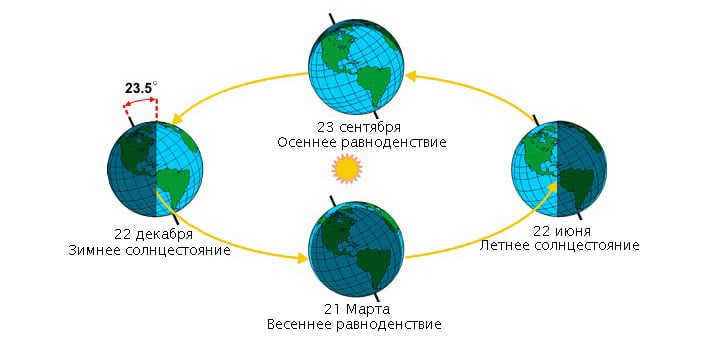
Equinoxes are the times of year when day and night are of equal length. The shortest day in the northern hemisphere and the longest day in the southern hemisphere occur on December 22. On the other hand, June 21 has the longest day in the northern hemisphere and the shortest day in the southern hemisphere. The solstices mark the beginning of astronomical summer and winter.
During the solstice, the Sun shines its brightest on one of the two hemispheres, illuminating the maximum area.
Climatic Seasons
The occurrence of seasons varies greatly depending on the geographical location. The further a location is from the equator, the more pronounced the differences between the seasons become.
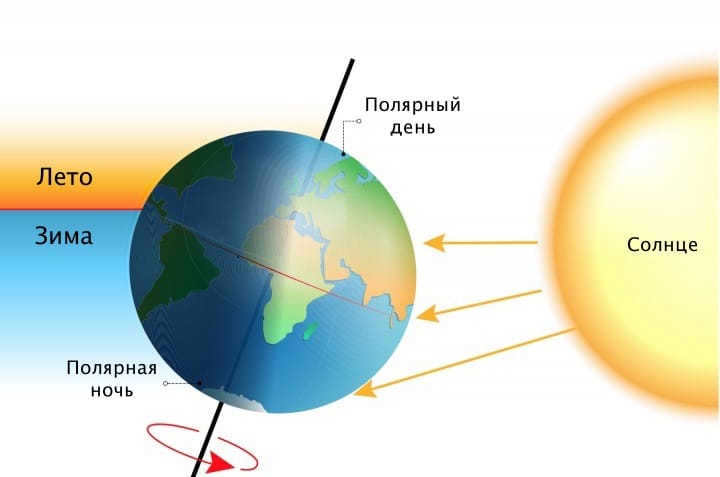
- The climatic conditions in the equatorial region remain relatively constant throughout the year, with little variation in temperatures.
- Tropical latitudes experience two distinct weather patterns throughout the year: a rainy and hot season in the winter, or a dry and extremely hot season in the summer. These regions never experience cool temperatures.
- In the temperate zone, the transition between summer and winter varies depending on the specific climate. Continental climates have hot and humid summers in June, July, and August, and harsh and dry winters in December, January, and February. Areas near the ocean have mild and wet winters, and cool summers with limited rainfall.
- China and other countries in East Asia have a monsoon climate, which means they have very humid summers with a lot of rain and dry winters with no precipitation.
What causes the consistently warmer temperatures in the southern hemisphere?
The distance between the Earth and the Sun is not constant, ranging from 152 to 147 million kilometers. On December 22, the southern hemisphere is closer to the Sun, resulting in higher temperatures, especially in the southern tropics.
Additionally, the southern hemisphere benefits from a greater number of warm ocean currents compared to the northern hemisphere. Furthermore, there are fewer large land masses in the southern hemisphere, with only half the amount of land compared to the northern hemisphere. This allows the oceans to accumulate and retain heat, creating a more favorable climate during the colder seasons.
The phenomenon of seasonal changes in the Earth’s hemispheres
In both the southern and northern hemispheres, the seasons consistently occur in opposite patterns. When one hemisphere is tilted away from the sun, the other hemisphere is tilted towards it. As we experience the transition to summer, our counterparts in the southern hemisphere are greeted by winter.
Due to the elliptical shape of the Earth’s orbit as it orbits around the sun, the duration of the seasons in the southern hemisphere differs slightly from that of the northern hemisphere. Summers in the southern hemisphere are slightly shorter, while winters are longer by approximately 4 days.
Therefore, the alteration of the seasons can be attributed to the inclination of the Earth’s axis, the Earth’s rotation around the Sun, and the elliptical orbit of our planet’s rotation around the Sun. Astronomical seasons slightly deviate from the traditional calendar that humans have devised. Were you aware, for instance, that in the northern hemisphere, spring concludes on June 20?

On this website, you can discover a plethora of captivating and electrifying narratives, numerous facts, and explanations about the world. Our platform offers a wealth of valuable and engrossing information from various fields such as science, sports, nature, animals, and much more.
Take the time to peruse and share with your companions!
In this particular article, we will delve into the topic of Why the Seasons Change.
The alteration of seasons on our planet is an ordinary occurrence. We have become so accustomed to the progression of seasons that we scarcely take notice. However, with the arrival of each new season, our entire way of life undergoes a transformation.
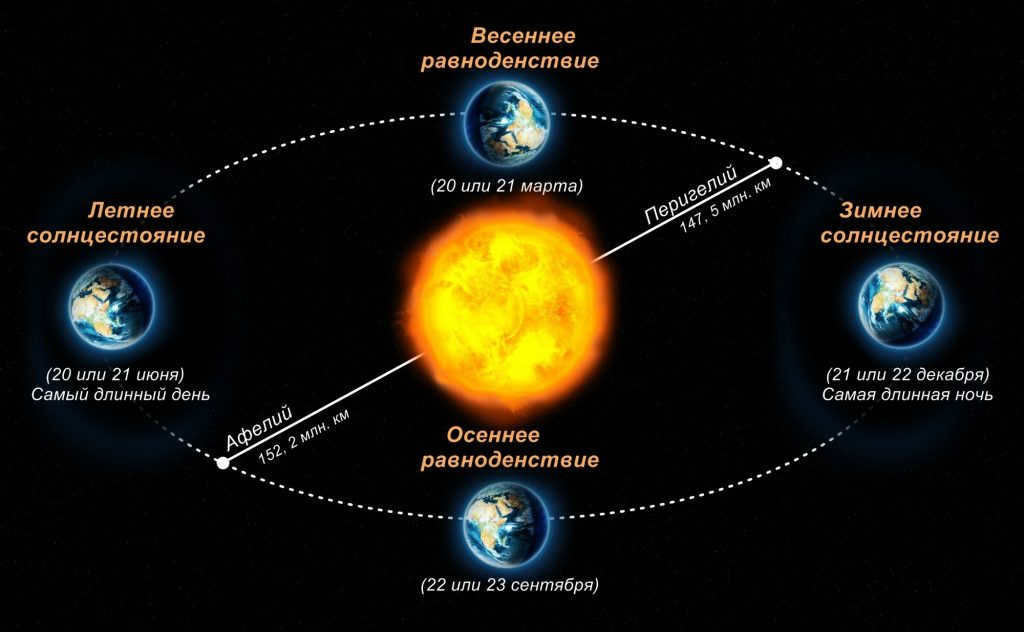
The changing of seasons on Earth is responsible for determining the appropriate clothing and activities for each time of year. During the summer, people often take vacations and enjoy activities such as mushroom and berry picking. In the autumn, individuals have the opportunity to create beautiful compositions using fallen leaves and other gifts from nature. Winter brings the chance to build snow forts and engage in winter sports like ice hockey. Finally, during the spring, people can witness the beautiful blossoming of plants and trees and rejoice in the arrival of warmer weather.
What causes the change of seasons?
The rotation of the Earth around the Sun is the primary factor behind the change of seasons. Another significant factor, particularly evident in moderate latitudes, is the tilt of the Earth’s axis. The Earth’s axis is inclined at an angle of 66.56° in relation to the ecliptic plane.
As a result, in these latitudes, we observe the most pronounced and dramatic transitions between seasons, with solstice days, equinoxes, and polar day-night phenomena.
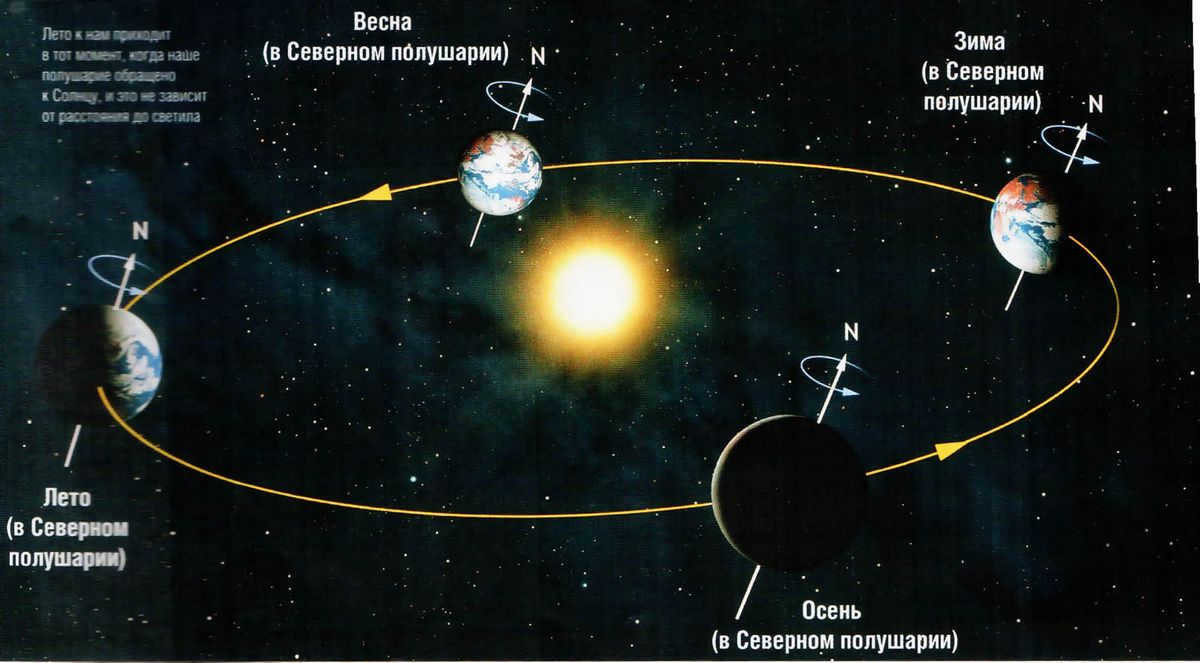
As a result of the Earth’s axial tilt, the Sun appears at varying angles throughout the year. During the winter months, the angle is more acute, while during the summer months it approaches a right angle.
However, it never quite reaches a right angle. A full 90 degrees can only be observed at the equator. At the poles, the sun’s rays simply graze the surface, limited by a maximum angle of incidence of 27-30 degrees.
If we examine the contrast between the seasons in various hemispheres of the Earth, the scenario unfolds as follows. While traversing the equator, the Earth’s axis remains unchanged in its tilt angle. Merely the “facets” that it presents to the Sun undergo alteration.
The lower portion experiences summer in the Southern Hemisphere, while the upper portion experiences it in the Northern Hemisphere.
Astronomical factors behind seasonal variations
The cycle of seasons on Earth follows a continuous pattern:
- During winter, the sun’s rays illuminate the lowest position on the ecliptic;
- Spring commences when the sun transitions from the southern hemisphere to the northern hemisphere;
- Summer is characterized by the sun heating the highest point in the northern hemisphere;
- Autumn arrives when the sun crosses the celestial equator from top to bottom.
If the Sun is oriented more towards the Northern Hemisphere, the summer season slowly approaches its continents. The length of the days increases while the nighttime decreases. As the globe’s position changes, the countries in the Southern Hemisphere become illuminated by the sunlight, marking the arrival of winter in the Northern Hemisphere. This process occurs in the exact opposite manner as well. Each season lasts for a duration of 3 months before transitioning to the next. Additionally, there are certain regions around the world where the temperature remains consistent throughout the year.
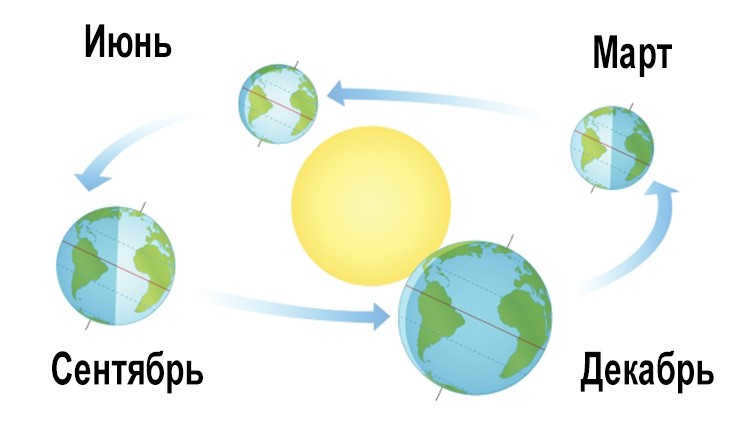
In order to gain a better understanding of the phenomenon behind the changing of seasons on Earth, it is necessary to grasp the concept of celestial body movement in outer space as well as some influencing factors.
- The Ecliptic is an immense circle on the celestial sphere along which the Sun moves over the course of a year.
The Ecliptic plane refers to the region of Earth’s path around the Sun. - Axis tilt is the angle at which Earth’s rotational axis deviates from being perpendicular to the plane of its orbit.
- Elliptical orbit. Instead of following a perfectly circular path, our planet’s trajectory takes on the shape of an ellipse, resembling a slightly compressed and elongated circle.
Due to the Earth’s orbit around the Sun, the Southern Hemisphere experiences hotter summers compared to the Northern Hemisphere. This is because during the period when the Earth and the Sun are closest to each other, the Southern Hemisphere is in closer proximity to the Sun than the Northern Hemisphere.
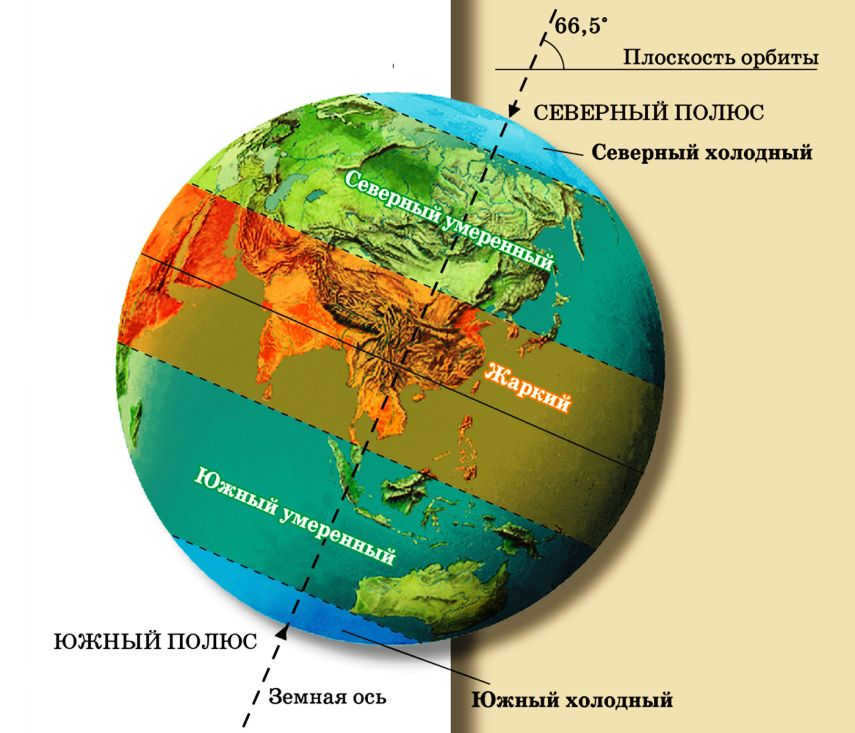
Certainly, South Africa and Australia also experience winter and snowfall. However, the winter in these countries is much milder compared to the winter in Russia’s Yamal Peninsula or the New Guinea Archipelago.
The transition of seasons, depicted using images captured by the geostationary satellite METEOSAT-9, taken between December 21, 2010, and September 20, 2011.
The variation of seasons in the Earth’s hemispheres
Now you have a grasp of the mechanism and rationale behind the alteration of seasons on Earth. Let’s delve into the specific changes that occur in the Northern and Southern Hemispheres.
As the Earth moves closer to the Sun, summer commences in the continents of the Northern Hemisphere. The length of days increases, and in areas nearer to the pole, daylight persists even past midnight. Subsequently, as the Earth completes its orbit around the Sun, it finds itself on the opposite side of the celestial body. Due to the inclination angle, this positioning causes the Northern Hemisphere to experience a greater distance from sunlight and warmth, thus heralding the onset of winter on its landmasses.
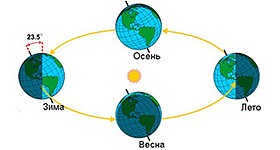
It should be noted that individuals residing in equatorial and tropical regions are not acquainted with the freezing temperatures of winter. This can be attributed to the fact that the position of the equator in relation to the Sun remains relatively unchanged as the planet orbits. Consequently, the seasons experienced in these regions are not as starkly contrasting as those in places like Russia, and the transition from one season to another is much more gradual.
The astronomical phenomenon characterized by the Sun’s movement from one hemisphere to another is known as the equinox.
In the realm of nature, we are acquainted with the four distinct seasons that grace our Earth – summer, winter, fall, and spring. However, what sets these seasons apart from one another?

- Springtime. The three months of spring are March, April, and May. During this period, the world awakens from its winter slumber. The sun shines with more intensity, providing warmth and light. The snow gradually melts away, revealing the first hints of green grass and the delicate snowdrops. Animals emerge from their burrows and nests, ready to embrace the new season. Tree branches begin to bud, giving birth to the first leaves. Birds build their nests and hatch their eggs, while all animals experience a sense of nurturing. Rain replaces snow as the primary form of precipitation, accompanied by the occasional thunderstorm and the possibility of rainbows.
- Summer. This season is adored by everyone around the globe. June, July, and August are the months of leisure spent in the outdoors and near bodies of water. In certain areas, the temperature can soar up to 30 degrees Celsius, sometimes even beyond. Individuals opt for lightweight attire and seek refreshment in water bodies. The flora is laden with fruits, marking the time to gather provisions for the upcoming winter.
- Autumn. During the period of September, October, and November. – the entire natural world has the opportunity to get ready for the transition in weather. The foliage on the trees takes on beautiful yellow-red hues. Frequently referred to as the golden season, autumn is when all the fruits fully ripen and become ready for consumption. Animals start to prepare their shelters, insulating them and hiding away their food supplies. Towards the end of autumn, trees begin to shed their leaves. The temperature decreases, becoming cooler, and the occurrence of rain becomes more frequent. In certain cities and countries, it is not uncommon to see snowfall as early as November.
The phenomenon is quite ordinary and may seem simple at first glance, but it actually encompasses complex sciences such as astronomy and physics. However, it is possible to easily and clearly explain all the changes in nature to a child. All one needs to do is take a ball or sphere, pierce it with a needle, place it near a table lamp, and rotate it slowly. As the light from the lamp moves around the ball, it becomes apparent how the seasons change on planet Earth.
Fascinating information:
- The Earth’s speed as it orbits around the sun is 29.76 km/s;
- The distance traveled in one orbit is over 980 million kilometers;
- About 40% of the planet is covered by the hot belt, while the temperate belt covers 52% of the Earth’s surface. The cold belts make up 8% of the land area;
- The equator has a length of approximately 40,076 kilometers;
- The planet’s orbital speed is around 30 km/s;
- The rotational velocity of the Earth varies at different points on its surface, with the highest speed occurring at the equator;
- The Earth’s axis always points in the same direction – towards the North Star.





